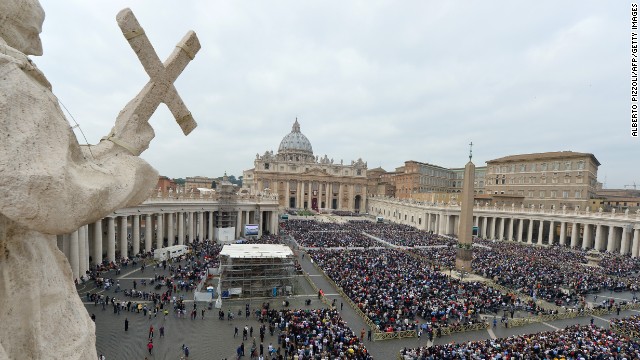 After centuries buried beneath the Vatican,
and decades hidden away inside the Holy See, the bones of a man long
believed to be St. Peter, one of the founding fathers of the Christian
church, are to go on display for the first time.
After centuries buried beneath the Vatican,
and decades hidden away inside the Holy See, the bones of a man long
believed to be St. Peter, one of the founding fathers of the Christian
church, are to go on display for the first time.
The controversial remains
will be revealed to the public on Sunday at a mass in St Peter's Square
marking the conclusion of the Catholic church's "Year of Faith."
Writing in L'Osservatore Romano,
the semi-official Vatican newspaper, Archbishop Rino Fisichella said
the "relics which tradition recognizes as those of the apostle who gave
his life for the Lord" would be exhibited as part of the service.
L'Osservatore Romano reports that 8.5 million pilgrims have venerated the relics over the course of the year.
Who was St. Peter?
Christians believe that St. Peter was a fisherman from the shores of Lake Galilee (in modern day Israel) who became one of the earliest and closest disciples of Jesus Christ.
Originally named Simon, Jesus gave him the name Cephas, or Petros, meaning "the Rock."
According to the Bible, when Jesus was arrested, Peter denied knowing him three times, but following Jesus' crucifixion, he was one of the first witnesses to the resurrection.
He led the early church, and is recognized as the first Pope in the Roman Catholic faith.
St Peter is believed to have been martyred -- by being crucified upside down -- in Rome in about A.D. 64. The main basilica in the Vatican is named in his honor.
Christians believe that St. Peter was a fisherman from the shores of Lake Galilee (in modern day Israel) who became one of the earliest and closest disciples of Jesus Christ.
Originally named Simon, Jesus gave him the name Cephas, or Petros, meaning "the Rock."
According to the Bible, when Jesus was arrested, Peter denied knowing him three times, but following Jesus' crucifixion, he was one of the first witnesses to the resurrection.
He led the early church, and is recognized as the first Pope in the Roman Catholic faith.
St Peter is believed to have been martyred -- by being crucified upside down -- in Rome in about A.D. 64. The main basilica in the Vatican is named in his honor.
But whether the bones,
normally kept in an urn housed in the private chapel of the Pope's own
Vatican apartments, really are those of St. Peter, the
fisherman-turned-disciple who became the first pope, is open to
question.
Tradition has it that St.
Peter was martyred -- by being crucified, upside down -- in Rome in
A.D. 64. before being buried in the city.
In his book "The Vatican Diaries," John Thavis
wrote that "St. Peter's tomb in the cemetery on the Vatican Hill
became... a popular pilgrimage site," prompting the emperor Constantine
to build a basilica in his honor in the 4th century.
The remains which will be
revealed on Sunday were among those discovered during an archaeological
dig begun on the site in 1939; in 1968 the then pope, Paul VI, declared
that they had been identified "in a manner which we believe
convincing."
But with no DNA evidence
to conclusively prove their identity, whether they belong to St. Peter
is likely to remain an enduring mystery.
CNN's Vatican analyst John Allen says that like so much concerning religion, the belief that the bones are those of the disciple comes down to faith.
"Like other famous
relics, such as the Shroud of Turin or the Belt of Mary, they evoke awe
and devotion regardless of their actual provenance," Allen writes in an Op-Ed for CNN. "Faith, as the Bible puts it, lies in 'the evidence of things not seen.'"
No comments:
Post a Comment
you are naijah for real page